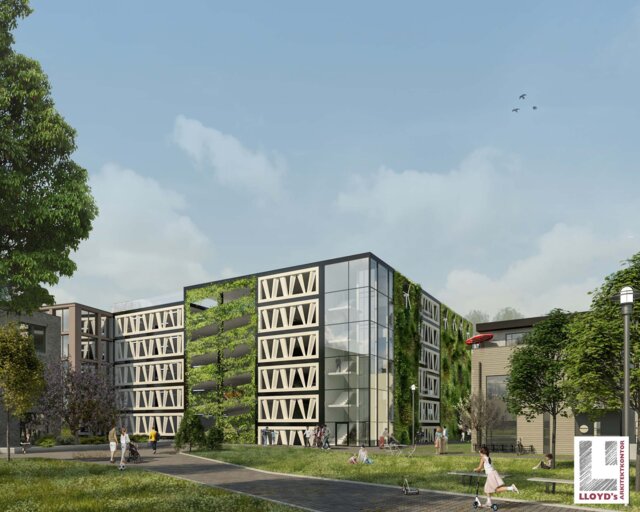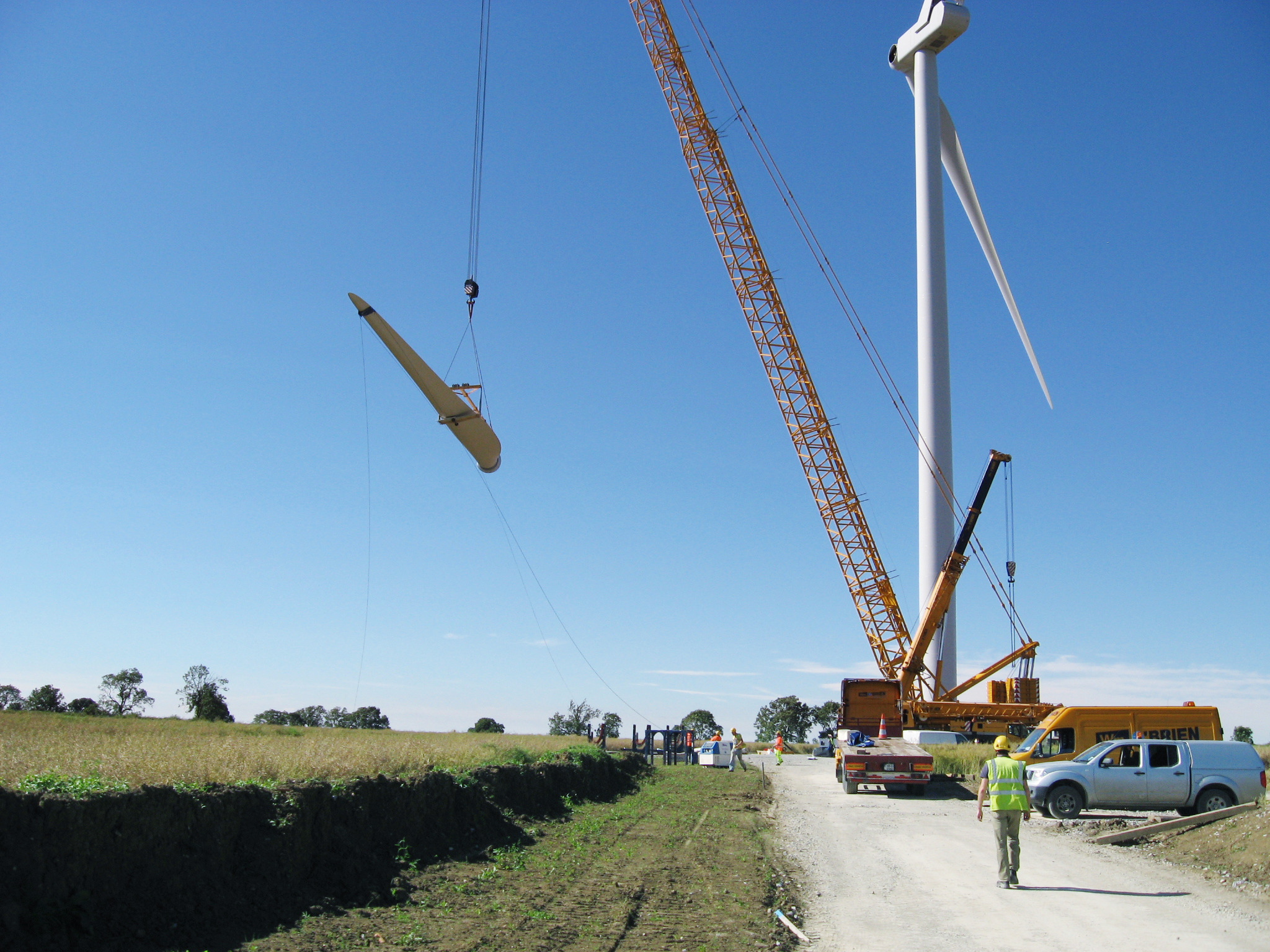Repurpose
Sustainable Parking Sweden Style

What is repurposing?
Repurposing refers to the structural reuse of wind turbine components for a different function than its original use.
Components can be repurposed in entirety or in parts. For example, turbine foundations can become water storage units on farms and turbine blade can be turned into playparks.
This strategy offers a lot of space for creativity. Furthermore, repurposing involves checking, measuring, cleaning, and potentially cutting components into the required sizes before turning it into a new product.
While it will not be possible to repurpose all components, this is a good strategy to generate value alongside recycling. Repurposing can also generate high social value in communities. Finally, structural reuse saves carbon emissions for products that would otherwise be manufactured from scratch.
Dr. Anne Velenturf, University of Leeds
Circular strategy
Repurpose
The sawn wind turbine blades will be incorporate in a new eco-friendly multistorey car park façade. This will reduce waste and eliminate the need for conventional building materials like concrete or steel and thereby lower the carbon footprint.
Environmental Impact
Less is More
The project repurposes wind turbine blades for a car park and thereby eliminating the need for high-carbon materials like concrete, while promoting visible sustainability and eco-friendly innovation.
Societal impact
The project promotes societal benefits by showcasing visible sustainability, encouraging reuse of durable materials, and inspiring large-scale solutions for infrastructure projects with eco-conscious design and legislation.
Business impact
Repurposing wind turbine blades reduces disposal costs for wind park developers, supports sustainability goals, opens new revenue streams, enhances brand reputation, and attracts eco-conscious investors and partners.
Partner
Vattenfall is one of Europe’s largest producers and retailers of electricity and heat. We are a leading producer of renewable power in Europe.

Repurposing of blades
The new eco-friendly multistorey car park will incorporate decommissioned wind turbine blades in its façade. The parking house will feature turbine blades as curtain walls, paired with green walls of pollinator-friendly plants, while solar panels and batteries will power electric car charging. Environmental benefits are repurposing large wind turbine blades (23.5 meters long) reduces waste and elimination the need for conventional building materials like concrete or steel. This will lower the carbon footprint.
Further info
Content text about the solution. Content text about the solution. Content text about the solution. Content text about the solution. Content text about the solution. Content text about the solution. Content text about the solution. Content text about the solution. Content text about the solution. Content text about the solution. Content text about the solution. Content text about the solution. Content text about the solution. Content text about the solution. Content text about the solution. Content text about the solution. Content text about the solution. Content text about the solution. Content text about the solution. Content text about the solution.
Blade waste target expanded
The project where we provided the blades resonates with our ambitious composite targets and to recycle 50% of turbine blades by 2025 and 100% by 2030.
Now we take the next step and expanded the target by inclusion of the composite of the nacelle and the turbine nose in our target. This means that all decommissioned composite turbine material need to be dealt with according to circular principles such as reuse, refurbish, repurpose, recycling. Click to go the the Newspage of Vattenfall.

Infographic


Fossil Freedom
In partnership with various actors, we are exploring various reuses, like frames for solar panels, building materials, and even skis. When other solutions aren’t aviable, we look into utilization of cement co-processing, to use blade components in construction. Our circular approach aims to reduce landfill waste and should encourage the industry to adopt more sustainable practices, though policy support is needed to drive wider reuse and repurpusing efforts.
Vattenfall
Vattenfall is a leading European energy company, which for more than 100 years has electrified industries, supplied energy to people’s homes and modernised people’s way of living through innovation and collaboration. We work to enable the fossil freedom that drives society forward. We are committed to building a future where everyone can choose fossil free ways to move, make and live. Our goal is net zero emissions in our entire value chain by 2040 at the latest. We employ approximately 20,000 people, have around 14 million customers and operate mainly in Sweden, Germany, the Netherlands, Denmark and the UK. Vattenfall is fully owned by the Swedish state.
Other circular strategies
See here the other Circular Strategies, which already provide a frontrunning showcase or are still available for new industry partners!


 Repurpose
Repurpose Refurbish
Refurbish Waste prevention
Waste prevention Reuse
Reuse Dematerialise
Dematerialise Remine
Remine